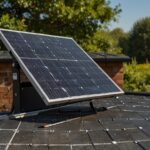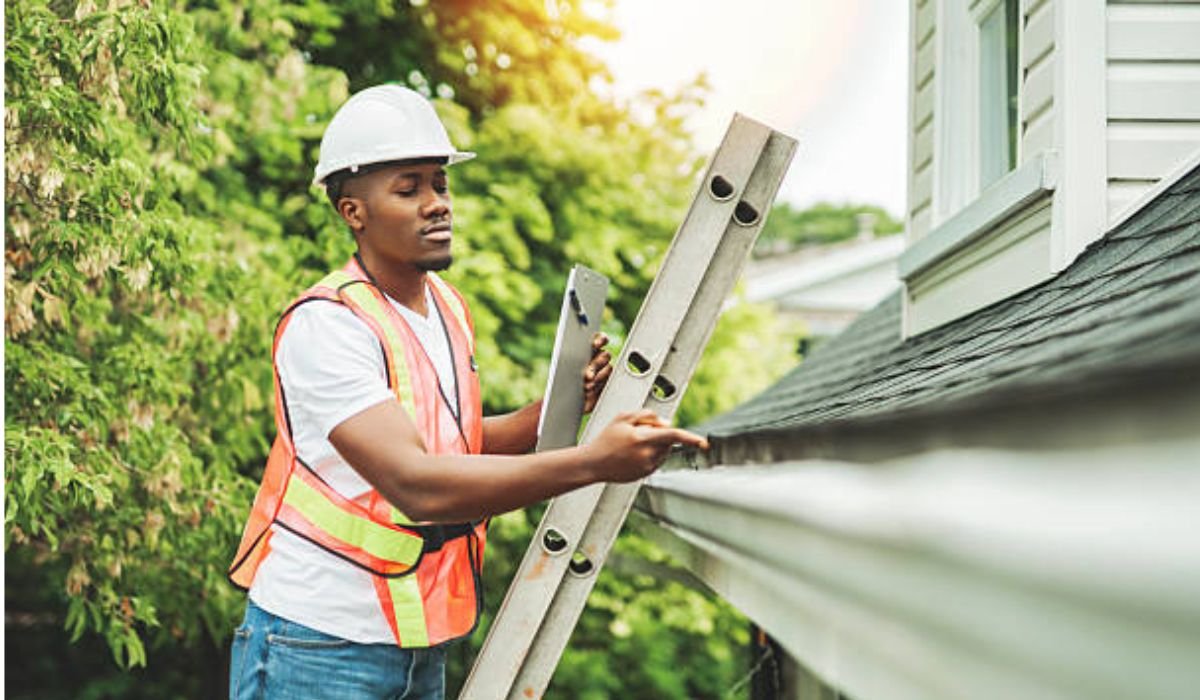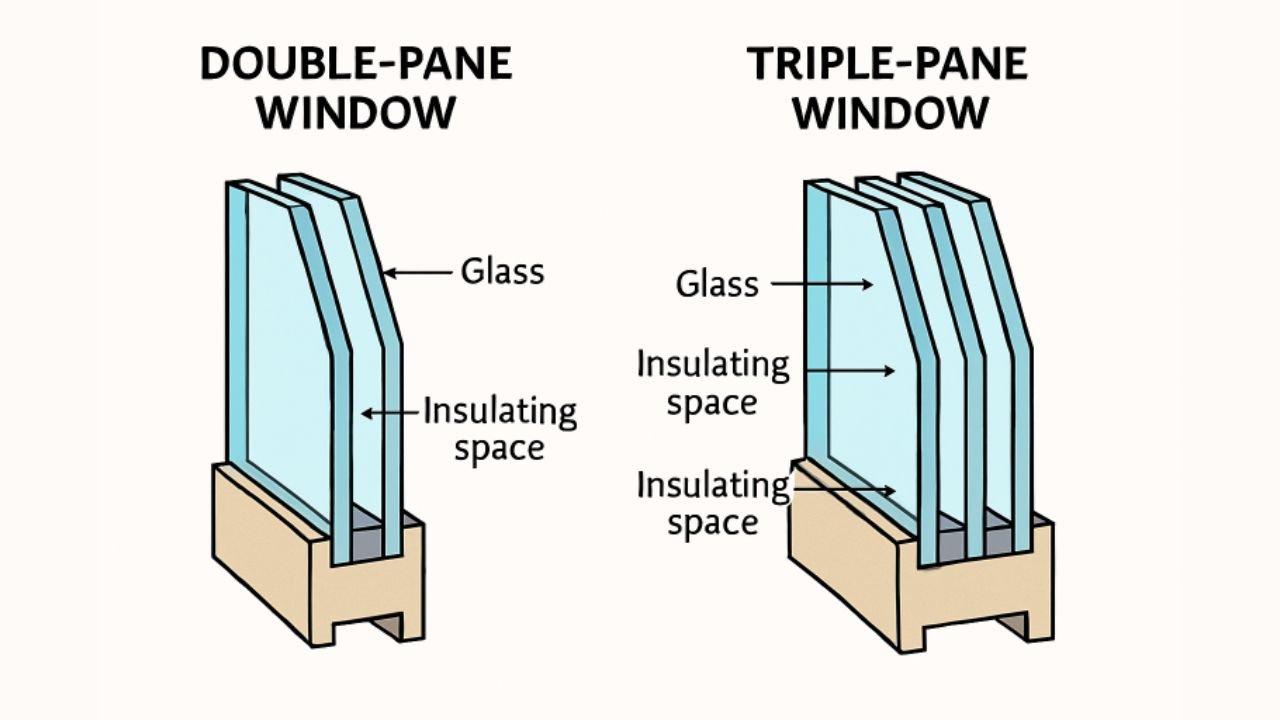Your roof is one of the most critical components of your home, protecting you and your family from the elements while contributing to your home’s overall energy efficiency and curb appeal.
However, the lifespan of a roof can vary significantly depending on the material, installation quality, maintenance, and environmental conditions. Understanding the expected lifespan of different roofing materials helps homeowners plan for replacements, maintenance, and budget considerations.
In this guide, we’ll explore the typical lifespans of various roofing materials and factors that can affect longevity.
1. Asphalt Shingles
Asphalt shingles are the most common roofing material in North America due to their affordability, ease of installation, and versatility.
- Lifespan: Standard asphalt shingles typically last 15–25 years, while architectural or premium shingles can last 30–40 years.
- Maintenance Tips: Regularly clean debris, inspect for cracks, and repair damaged shingles promptly.
- Advantages: Cost-effective, widely available, and available in a variety of colors and styles.
- Drawbacks: Shorter lifespan compared to premium materials, and susceptible to extreme weather damage.
Proper maintenance and timely repairs can extend the life of asphalt shingles, ensuring reliable protection for decades.
2. Metal Roofing
Metal roofs are gaining popularity for their durability, energy efficiency, and modern aesthetic. They are often made from steel, aluminum, copper, or zinc.
- Lifespan: 40–70 years, depending on the metal type and coating. Copper and zinc can last over 70 years.
- Maintenance Tips: Inspect for corrosion, check fasteners, and clean debris to prevent damage.
- Advantages: Fire-resistant, energy-efficient, and highly durable in harsh weather conditions.
- Drawbacks: Higher initial cost and potential for noise during rain or hail unless properly insulated.
Metal roofing is ideal for homeowners seeking long-term investment and minimal maintenance requirements.
3. Wood Shingles and Shakes
Wood shingles and shakes offer a natural, rustic aesthetic and are typically made from cedar, redwood, or pine.
- Lifespan: 20–40 years for shingles; shakes may last 30–45 years.
- Maintenance Tips: Treat with fire retardants, remove moss or algae, and replace damaged pieces promptly.
- Advantages: Natural beauty, environmentally friendly, and excellent insulation properties.
- Drawbacks: Prone to rot, insects, and fire hazards if not properly maintained.
Wood roofing adds charm but requires regular inspection and maintenance to maximize its lifespan.
ALSO LIKE: Why Fall and Spring Are the Best Times for Gutter Cleaning
4. Clay and Concrete Tiles
Clay and concrete tiles are popular in warmer climates due to their durability, aesthetic appeal, and resistance to UV rays.
- Lifespan: Clay tiles can last 50–100 years, while concrete tiles last 40–60 years.
- Maintenance Tips: Inspect for cracked tiles, check underlayment, and replace broken pieces.
- Advantages: Long-lasting, fire-resistant, and excellent in hot, sunny climates.
- Drawbacks: Heavy material requiring reinforced roof structure, higher installation costs.
Tile roofs are an excellent option for homeowners seeking longevity and low maintenance with an attractive appearance.
5. Slate Roofing
Slate roofs are known for their exceptional durability and timeless elegance, often seen on historic or high-end homes.
- Lifespan: 75–200 years, making slate one of the longest-lasting roofing materials.
- Maintenance Tips: Inspect for broken slates, maintain flashing, and ensure proper installation.
- Advantages: Extremely durable, fireproof, and low maintenance once installed.
- Drawbacks: Very heavy, costly, and requires skilled professionals for installation.
Slate roofs are a premium choice, offering unmatched longevity and beauty.
6. Synthetic and Composite Roofing
Synthetic roofing materials, such as rubber, plastic, or polymer-based shingles, are designed to mimic natural materials like slate or wood.
- Lifespan: 30–50 years, depending on quality and exposure to weather.
- Maintenance Tips: Check for cracking, UV damage, and clean debris regularly.
- Advantages: Lightweight, versatile, and often more affordable than natural materials.
- Drawbacks: May not have the same longevity as natural slate or clay.
Synthetic options provide the aesthetic appeal of natural materials with lower weight and easier installation.
7. Flat Roof Materials
Flat roofs are common in commercial buildings and modern residential designs. Common materials include modified bitumen, EPDM (rubber), TPO, and PVC membranes.
- Lifespan:
- EPDM: 20–30 years
- TPO/PVC: 20–25 years
- Modified Bitumen: 15–20 years
- EPDM: 20–30 years
- Maintenance Tips: Inspect for ponding water, cracks, or membrane tears; ensure proper drainage.
- Advantages: Affordable, suitable for rooftop installations, and easier to access for maintenance.
- Drawbacks: Shorter lifespan than pitched roofs and more prone to leaks if not properly maintained.
Flat roofs require diligent maintenance to prevent water damage and extend their lifespan.
8. Factors That Affect Roof Lifespan
Several factors can impact how long your roof lasts, regardless of material:
a. Climate and Weather
Extreme temperatures, hail, heavy rain, and snow can shorten a roof’s lifespan. Coastal areas with salty air may cause metal corrosion.
b. Installation Quality
Proper installation is critical. Even premium materials will fail prematurely if installed incorrectly. Always hire experienced, licensed roofing contractors.
c. Maintenance and Inspection
Regular inspections, cleaning debris, and timely repairs are essential to prolonging roof life. Ignoring minor issues can lead to major damage.
d. Ventilation and Insulation
Poor attic ventilation and insulation can cause heat buildup, moisture accumulation, and early deterioration of roofing materials.
e. Tree Coverage and Debris
Overhanging trees can drop leaves, branches, and debris, causing damage or promoting mold and moss growth.
9. Signs Your Roof Needs Replacement
Even if your roof hasn’t reached the end of its expected lifespan, certain signs indicate replacement may be necessary:
- Curling, cracked, or missing shingles
- Persistent leaks or water damage
- Sagging roof sections
- Excessive granule loss from asphalt shingles
- Rust or corrosion on metal roofs
- Mold or moss growth that cannot be removed
Early replacement or repair prevents structural damage, interior water damage, and costly emergency situations.
10. Emergency Roof Repairs
Occasionally, roofs may sustain sudden damage from storms, fallen trees, or severe leaks. Quick response is essential to prevent further damage to your home. If you encounter a roofing emergency, it’s important to contact for emergency roof repair immediately to secure your home and schedule professional repairs.
Conclusion
The lifespan of a roof varies significantly depending on the material, climate, maintenance, and installation quality. From asphalt shingles with a lifespan of 15–25 years to durable slate that can last up to 200 years, understanding your roofing material helps you plan replacements, maintain your home, and budget accordingly.
Regular maintenance, timely inspections, and professional installation are crucial to maximizing roof longevity. By being proactive, homeowners can avoid costly repairs and ensure their roof continues to provide protection, comfort, and aesthetic appeal for years to come.
Whether you are planning a new roof or maintaining an existing one, knowing the lifespan of your roof and understanding the signs of wear can make all the difference in protecting your home investment.
YOU MAY ALSO LIKE: Top Kitchen Plumbing Tips for a Seamless Renovation










